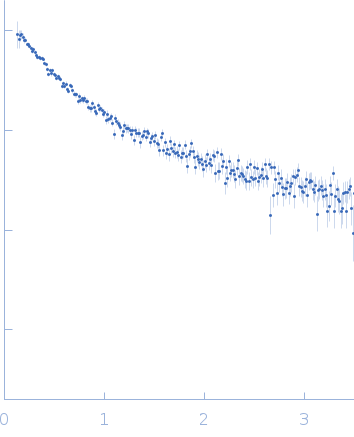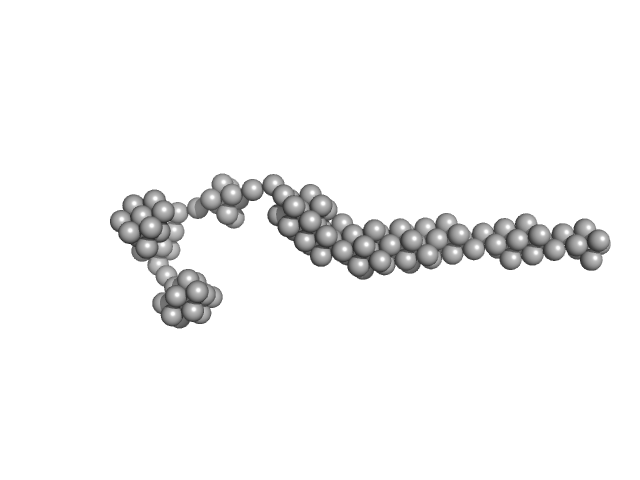|
SAXS data from solutions of the chromatin assembly factor 1 - long alpha-helix domain in 20 mM sodium phosphate, 200 mM NaCl, 0.1 mM TCEP, pH 7 were collected using a Xenocs BioXolver L with MetalJet instrument (Département de Biochimie, Université de Montréal, Canada) equipped with a Pilatus3 R 300K detector at a sample-detector distance of 600 m and at a wavelength of λ = 0.134 nm (I(s) vs s, where s = 4πsinθ/λ, and 2θ is the scattering angle). In-line size-exclusion chromatography (SEC) SAS was employed. The SEC parameters were as follows: A 500.00 μl sample at 5.8 mg/ml was injected at a 0.05 ml/min flow rate onto a GE Superdex 200 Increase 10/300 column at 20°C. 160 successive 60 second frames were collected. The data were normalized to the intensity of the transmitted beam and radially averaged; the scattering of the solvent-blank was subtracted.
|
|
 s, nm-1
s, nm-1
